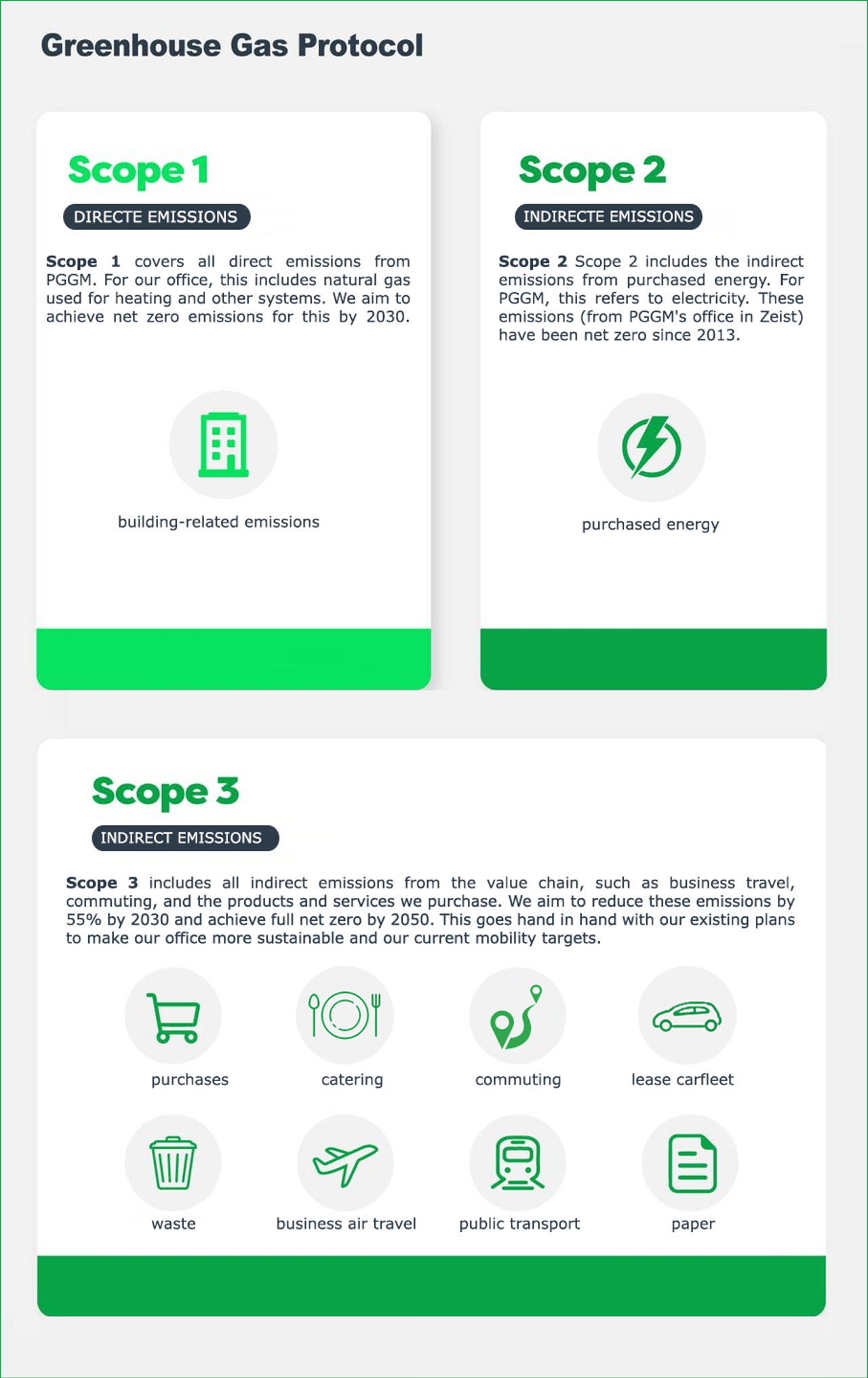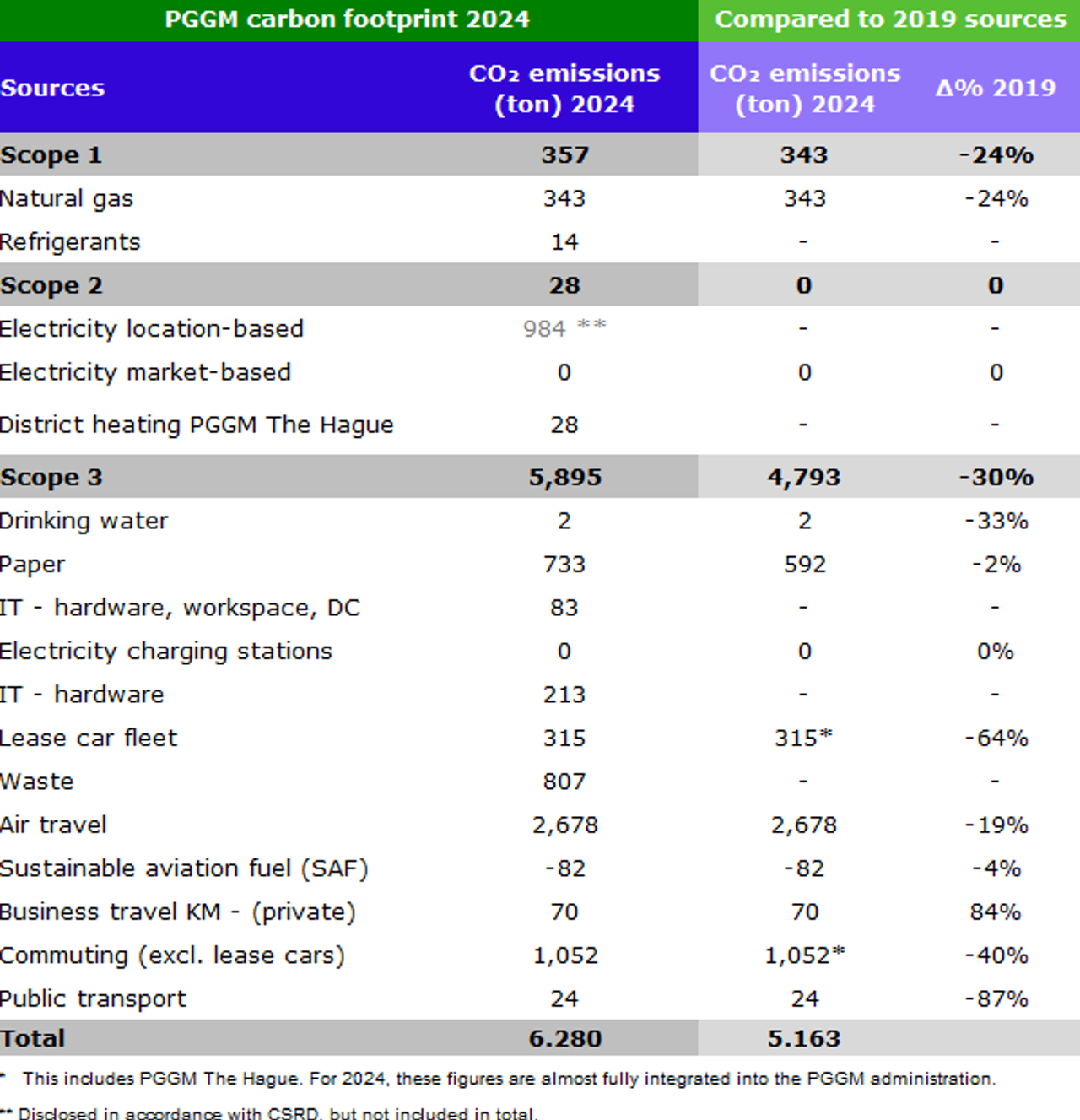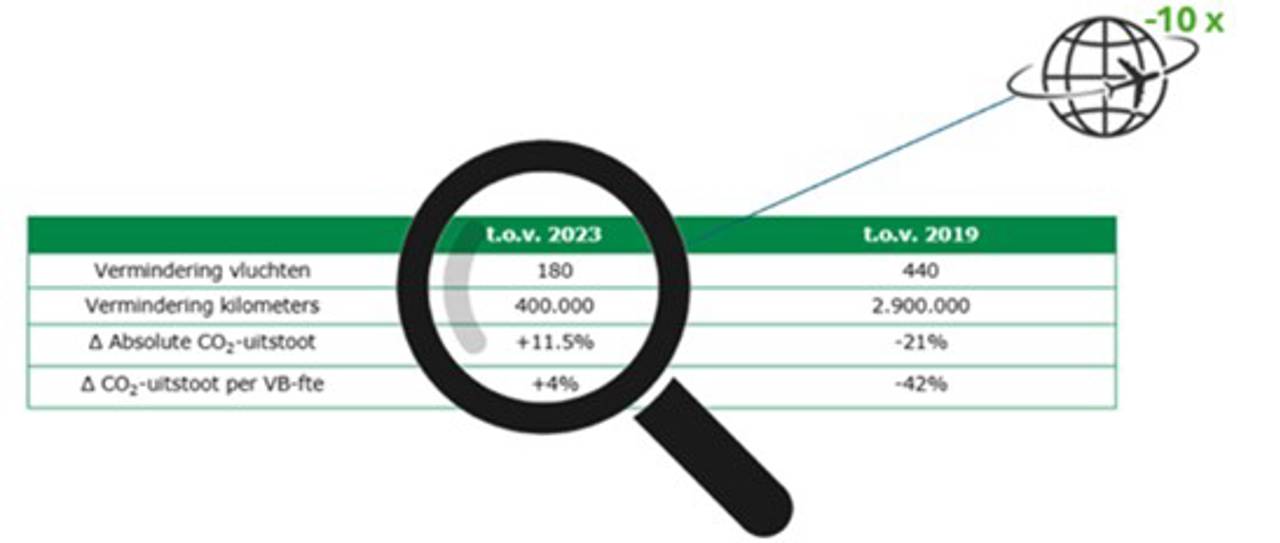
Our 2024 CO₂ footprint
Our net zero ambition
We take this responsibility seriously. We help our clients play their part in building a more sustainable future while also doing everything we can to reduce our own impact as an organisation. PGGM has set a clear ambition: to achieve net zero carbon emissions in our operations by 2050. Our net zero policy helps us take clear, measurable steps towards that goal.
Reaching net zero is ambitious and requires a new way of thinking and working, not only within our own organisation but also throughout the value chain we are part of. This is why it is so important to focus on what is possible today. Even though our operational footprint may seem relatively small, every tonne of CO₂ we avoid really does make a difference.

Interim targets for each scope
To achieve our net zero target, we have set interim goals for each element of our carbon footprint, based on the internationally recognised Greenhouse Gas (GHG) Protocol. This protocol distinguishes three scopes:

Emissions from mobility: on the right track
Despite a 48 percent decrease compared to our base year 2019, mobility remains our largest source of emissions in 2024. Within this category, business air travel accounts for the biggest share, with 2,678 tonnes of CO₂ in 2024.

Usually, the emissions factor for air travel, which is the amount of CO₂ emitted per kilometre flown, tends to fall because of technological developments in the aviation industry. In 2023, however, this factor increased by 35 percent because planes still carry fewer passengers than they did before the pandemic. This means emissions per passenger kilometre are higher.
To help reduce emissions from air travel, PGGM purchases Sustainable Aviation Fuel (SAF). Currently, this is the only practical option to limit the climate impact of flying. In 2024, this resulted in a saving of 82 tonnes of CO₂.
Commuting, business travel, public transport and lease fleet
Commuting in 2024 shows a slight drop in emissions compared to 2023. Interestingly, people worked from home slightly less, spending 56 percent of their time at home compared to 58 percent the year before. On office days, colleagues chose more sustainable options more often, such as public transport or cycling instead of driving. Our lease fleet has also contributed to this reduction, as further electrification has led to another drop in emissions.
Paper use in pension communications
Emissions from paper used for pension communications amounted to 733 tonnes of CO₂ in 2024, an increase of 12 percent compared to 2023. If we exclude PMT and Bpf Koopvaardij, emissions for PFZW, Schilders and Stipp in 2024 total 592 tonnes. This means the reduction compared to 2019 is now just 2 percent.
The main reason for this increase in paper use is the growth in the number of participants and the higher print run of the magazines. Savings achieved by using thinner paper, fewer envelopes and more digital communications are positive developments, but they do not fully offset the increase.
IT emissions
Emissions from IT increased by 69 percent in 2024 compared to 2023. This rise is not reflected in the comparison with 2019, because IT was not yet recorded separately as a source of emissions at that time. The increase is largely due to the acquisition of MN Pensioenservices, which brought in many new colleagues and therefore a lot of extra hardware, such as laptops and mobile phones.
Plans for further reduction
With our net zero ambition in mind, we have identified various areas such as buildings, mobility, pension communications and IT. By the end of 2024, this has resulted in clear reduction plans that set out the next steps towards achieving our net zero target.
Share or Print Article
click on the icon



